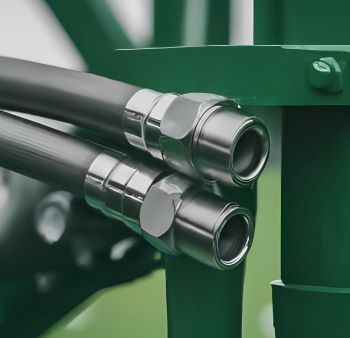Fitting reducers are essential components in plumbing and piping systems. They provide a smooth transition between pipes of different diameters, allowing you to:
➡ Adjust flow rates within a system
➡ Connect to existing pipes of various sizes
➡ Design a more efficient pipe layout
Reducers come in different types, such as concentric (standard) and eccentric, to suit specific needs. They play a crucial role in ensuring the adaptability and functionality of plumbing and piping systems.
Hydraulic Fitting Reducers: The Basics
Imagine a fitting that seamlessly transitions between different pipe diameters. That’s the essence of a hydraulic fitting reducer. They come in two main types:
These have a smooth, tapered transition. It goes from larger to smaller diameters, ensuring smooth flow and low pressure loss.
These offer more space for flow redirection. They do this while changing diameters. This makes them ideal for tight spaces or for applications needing controlled flow diversion.
Reducers are usually made from strong materials such as steel, brass, or stainless steel. They can endure the high pressures and temperatures found in hydraulic systems. Construction requires precision machining and strict standards for leak-proof connections and reliable performance.
Applications of Hydraulic Fitting Reducers
Reducers play a vital role in various hydraulic systems:
➡️ Controlling Flow:
Reducers create a pressure drop by gradually decreasing their diameter. This drop controls the flow rate to specific components. This is crucial in applications like actuator speed control or regulating power output.
➡️ Connecting Dissimilar Components:
Hydraulic systems often involve components with different pipe sizes. Reducers bridge the gap, allowing seamless connections without compromising flow efficiency.
➡️ Optimizing System Design:
Reducers offer flexibility in system layout. They enable efficient routing and space optimization. This all comes while keeping the desired flow.
The benefits of using reducers are numerous:
➡️ Reduced pressure drops:
Gradual diameter changes minimize turbulence and pressure loss, leading to improved system efficiency.
➡️ Optimized flow:
Precise control over flow rates ensures optimal performance and prevents overloading of components.
➡️ Adaptability:
Reducers enable connecting different components and adapting systems to specific requirements.
Selecting and Using Hydraulic Fitting Reducers
Choosing the right reducer requires careful consideration of several factors:
➡️ Pressure Rating: Ensure the reducer can handle the maximum pressure in the system.
➡️ Flow Requirements: Select a reducer with sufficient flow capacity to meet the needs of the connected components.
➡️ Material Compatibility: Choose a material compatible with the fluid and operating environment.
➡️ Size and Thread Type: Match the reducer’s size and thread type to the connecting components.
Remember, proper installation is key:
➡️ Clean the threads: Ensure all threads are free of debris and contaminants.
➡️ Use appropriate tightening torque: Follow the manufacturer’s specifications to avoid leaks or damage.
➡️ Inspect regularly: Check for leaks, wear, or damage at regular intervals.
For deeper knowledge on the hydraulic system, visit these resources ⬇️⬇️⬇️
The Power Of Hydraulic Test Port Fittings
Building Connections: The Role Of Blank Flanges
Conclusion
Hydraulic fitting reducers are vital for directing flow in hydraulic systems. They optimize flow efficiently. Engineers and technicians design efficient systems by understanding science, applications, and selection criteria.
Technology advances may change reducer designs, but their role in shaping hydraulic power will stay crucial. Consult a professional for specific application advice. Ensure optimal performance and system longevity when choosing a reducer.
Post time: Apr-05-2024


